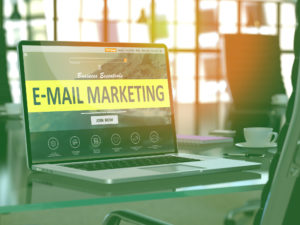
What Are the Benefits of Email Marketing Platforms?
Many businesses have experienced huge returns by investing in email marketing campaigns. Recently, marketers have seen
Automated content marketing essentially redefines how you handle repetitive tasks in your marketing strategy. It uses various tools and applications to take those of your list and produce them automatically. It boosts efficiency, helping you save time, money, and effort.
Content is critical when trying to attract, acquire and engage with your customers. After all, content is the thing that attracts new customers – it’s what the people are looking for. And its costs are fairly low and it delivers results. According to a study done by Demand Metric, content marketing is 62 percent cheaper than traditional marketing and generates three times more leads.
Content marketing includes:
Outsourcing your social media management is extremely helpful in many ways. Here are the amazing benefits of using social media marketing services.
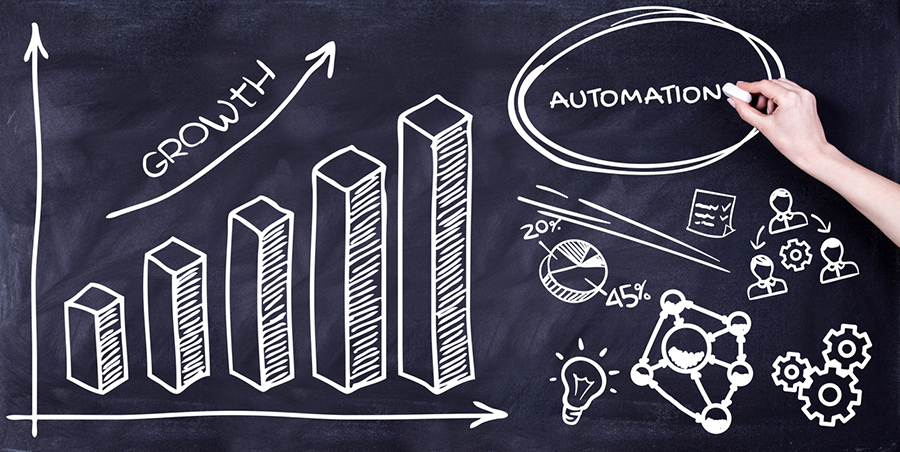
Competition is fierce in the online industry. Almost every niche is tough, there are a lot of important players and everyone wants a piece of the pie. Taking an active role in marketing is critical if you want to be successful and get more visibility and more clients. The old adage “if you build it, they will come” is no longer available – the competition is simply too fierce to stand out without being active.
However, being active doesn’t necessarily mean you have to do everything by hand. This would be ridiculous, and the workload would simply be overwhelming. Modern online marketing tools can be automated, helping you work smarter, not harder. Here’s what you need to know about marketing automation:
Let’s start with the basics and explain what is marketing automation. Essentially, marketing automation refers to various software platforms that automatically serve and post content to target audiences. There are multiple tools that help automate marketing, including social media tools, sales workflows, email drips, and various others. All these tools are programmed based on scheduling tools, analytics, and audience engagement. Marketing automation is essentially about using the best automation tools and procedures.
This is probably the most obvious benefit of marketing automation – you get more leads, more sales, and more money from your marketing efforts. And this is what all businesses are about, after all…
A recent survey has shown that the most important strategic goal of marketing automation is to increase lead generation (about 61 percent) and lead generation (about 57 percent). And marketing automation is ideal for this – you get unique features that nurture leads and serve new valuable prospects for your business, based on your preferences. This means you get good leads, which ultimately translate into more sales. What’s more, marketing automation sets you apart from the competition, as many clients already receive multiple messages from similar companies. With marketing automation, you set your own rules, create special workflows and drips, which do the hard work of nurturing your top-of-funnel leads and turning them into sales. This means your clients are ready for a more personal touch and are ready to make a purchase.
Marketing automation also uses behavioral tracking methods that predict what consumers want to do and what they are looking for. You can use this information to create specialized follow-ups for your clients, especially for stalled leads, boosting sales almost instantly. For instance, if you have a lead that went through the sales funnel, but decided to abandon the purchase, the automation tool will see it. With the information gathered, you can quickly create a personalized follow-up email, which can convince your client to come back and complete the purchase.
Marketing automation tools gather a lot of data about your clients and their behavior, such as website visits, social media activity, downloads, submission forms, and much more. This information is gathered, neatly organized, letting marketers score and prioritize leads in order to increase sales. There are other things you can implement, like trigger-based automated messages, personalized emails, custom social media messages, and drip-feed email campaigns. Marketing automation can be highly personalized, brands can nurture leads better, leading to more sales.
Getting leads and sales is a huge benefit of marketing automation, but there’s more. A good marketing automation platform will give you in-depth reporting tools on a variety of metrics. This means you can track your marketing efforts more effectively and get better results. You will spend your marketing budget more efficiently, get better results and perform better across all metrics.
According to recent data provided by SharpSpring, 45 percent of digital marketing agencies rely on marketing automation to showcase ROIs. Marketing automation provides better visibility for campaigns, analytics, better email reporting, and performance indicators. Simply put, marketing automation helps you understand if your efforts are performing and what type of action you need to take to improve performance. You’ll know what works and what doesn’t, as well as where you should invest more money.
Market spending also relates to time. After all, time is money, and many digital marketing agencies have a limited amount of time for each marketing campaign. Marketing automation saves time – a lot of it. If the platform is effective and properly implemented, it can replace a team of about 50 marketing employees. This will reduce overhead costs and consolidate various repetitive tasks into an efficient flow of procedures. Leads get identified quicker, email campaigns are automated and data is collected faster and organized better.
Marketing automation can also show you which is the weakest link inside your marketing team. The bottleneck can be easily identified, especially if the workflow is not smooth. What’s more, modifications can be easily implemented in order to improve the marketing campaign. Reporting systems are ideal when things don’t work well. For instance, a marketing manager can quickly see where the issues are. If hot leads are generated, but they are not turning into sales, the problem may be caused by poor nurturing and bad sales funnels.
A good marketing automation platform will act as your central marketing hub and the main generator of leads for your business. It’s the platform that ultimately generates the majority of your sales. Why? Because the platform essentially brings together all your applications, tools, and procedures. Your team will be able to collaborate better, work on larger projects and handle complex marketing campaigns. What’s more, marketing automation can be easily integrated into other important platforms, like social media networks, blogging, Google Ads, email, and SEO. You’ll be able to use all these tools and work smarter, not harder.
Efficiency is hugely important in this sector. Recent data shows that operational inefficiency is very expensive – businesses spend about 20 to 30 percent of their annual revenue on various operational inefficiency issues. Marketing automation fights this problem, and improves overall efficiency, reducing your operational inefficiency costs. Your team will be able to do more important high-touch work while reducing repetitive tasks.
By redirecting redundant, repetitive tasks to the automated system, companies can focus their staff towards creative ideas and strategies. Simply put, companies can focus on what’s important, creating better campaigns for their clients. Marketing automation also improves the workflow in a digital marketing agency. For instance, management and marketing teams can work better, communicate better and exchange ideas more efficiently. When using an integrated marketing automation platform, the risk of poor communication and disconnect between departments is lower. Simply put, it helps the engine run smoothly and effectively.
Having an online presence is becoming increasingly important. Check out this guide for making the most out of social media advertising for your business.
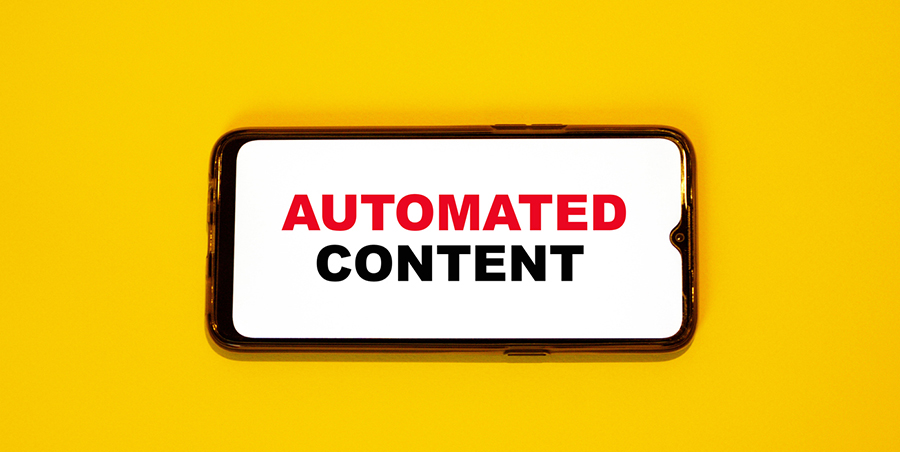
Marketing automation makes your life easier. But how?
Let’s take a look at marketing automation and what it’s all about – what is it, and how it can change your content marketing strategy?
In a nutshell, marketing automation refers to automated platforms that help businesses automate their marketing and sales processes. This leads to more leads, better conversions, and better overall ROIs. Lead generation is probably the main focus of every marketing strategy, and automated marketing helps you identify 98 percent of the web traffic that was previously anonymous.
Marketing automation and content marketing go hand-in-hand, and when you know how to use them together, you’ll see the massive benefits.
Marketing automation lets you leverage the content you have more efficiently, by making it visible to a wider audience. It also gets in front of the right people, the people that matter for your business. So let’s take a look at automated content marketing and what it’s all about:
As soon as a lead has put their name and email address into a form to receive a piece of content, you should start implementing the marketing automation process.
Keep in mind that leads acquired via content pieces offered when subscribing, no matter what the content is, are three to five times more likely to convert when compared to cold leads. As a result, it’s critical to make sure that the “request more information” form is attached to your emails, as it attracts customers. This is how your sequence should start. If this first step is successfully implemented, you can take the lead further through their journey, ultimately getting them closer to making a purchase (which is obviously the goal of the sales funnel).
For instance, let’s say that a lead puts their information in a form to receive a guide about content marketing. The lead receives the thank-you email, together with the attached guide. After the initial email, you can send similar emails, with more content to this lead. Essentially, the lead is included in the sequence and will receive multiple emails.
Lead scoring lets you prioritize and organize leads based on the information you have about them. This is the type of information you may have about your leads:
-The first and last name, as they provided it
-Their title, as they provided it
-Their email, as they provided it
-Forms completed
-Email clicks
-Social interactions
-Pages visited
-Media views
-Campaign pages visited and their behavior on these pages.
If you use a content automation platform, you can assign content that has to be created or updated. The content will be placed on a calendar, which will automatically publish it on the defined time.
This helps you maximize your reach and expand the audience. The process is automatic, via the automated social sharing service.
You’ll have to pay a little if you want to see the best results, and you want to see them quickly. Paid ads also get your content to the right people, at the right time, and quickly. Ads also let you specify your target market demographics.
How to improve email marketing with automated content marketing?
Emails have been around for decades, and they will still be… The reason is simple – they work. They are probably the easiest and most effective tools in your marketing campaign. But how can you make them even better? Yes, you guessed it – through automation:
Lead segmentation is a powerful tactic in email marketing. It’s where you separate leads depending on their specific interests and behaviors. When you organize your leads, your emails will be more focused and and conversions will be higher. Segmentation also helps you get your content in front of people who care about it, want it and read it.
When you use visual workflows, you’ll be able to remove leads automatically from any action groups or nurturing sequence, when a specific event occurs. You’ll also take action based on any applied filter. For instance, if a lead receives an email with a button to view a specific type of content, but there is also a link to speak to the member of the team, and they click the latter, the lead will be taken to a more sales-focused nurturing sequence.
Personalized emails work because they help you stand out from the clutter. According to a recent study done by Campaign Monitor, personalized subject lines in emails are 25 percent more likely to be opened. For instance, using the lead’s name establishes trust and helps build familiarity.
Every email should have a specific goal – this is the main rule of thumb in the marketing industry. You should encourage your lead to take action in each mail. Make sure to have a main call-to-action in each email (CTA).
In 2019, almost 300 billion emails were sent every day, a number which is expected to increase to almost 350 billion by the end of 2022. There are a lot of emails, and you have to be part of this growth. You have to optimize your email campaigns – here’s how:
Test everything! This should be your main priority when it comes to emails. You should focus on anything – the subject line, the greeting you use, the body content, photos, videos, links, button colors, placements and everything in between. Do A/B testing to see what resonates better with your audience. See what works and what doesn’t, and adapt your emails accordingly.
Social sharing can show if your lead is excited about the information you provided. You also get to reach more potential customers. Make sure to include social sharing links in your emails. Also, edit the metadata as this will be shown on LinkedIn and Facebook.
Emails should be compatible with both desktop and mobile devices. This is critical, as most people are using mobile devices to read their emails. Also, your emails should be displayed correctly on any device (data shows that people delete incorrectly displayed emails in three seconds).
Track your success by focusing on your email marketing KPIs. This will help you understand how well your strategy is going and how you can adapt it.
Marketing automation may seem daunting at first, but it’s a great tool to achieve your business goals. If implemented correctly you will see strong ROIs and better engagement with your customers.

Many businesses have experienced huge returns by investing in email marketing campaigns. Recently, marketers have seen
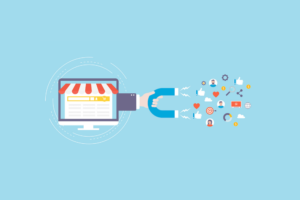
About 80% of new leads never translate into sales. Without a strong lead nurturing campaign strategy, you could
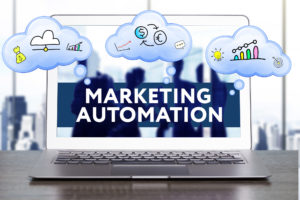
Roughly 30% of employees report that automation software saves money for their business. That’s right, by using marketing
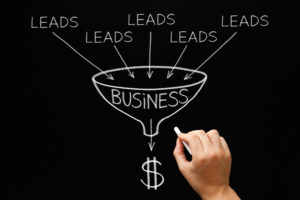
Over 95% of your website visitors aren’t ready to make a purchase. In fact, as many as 80%
Facebook and Instagram are some of the most powerful tools you can use when it comes to marketing your business online.
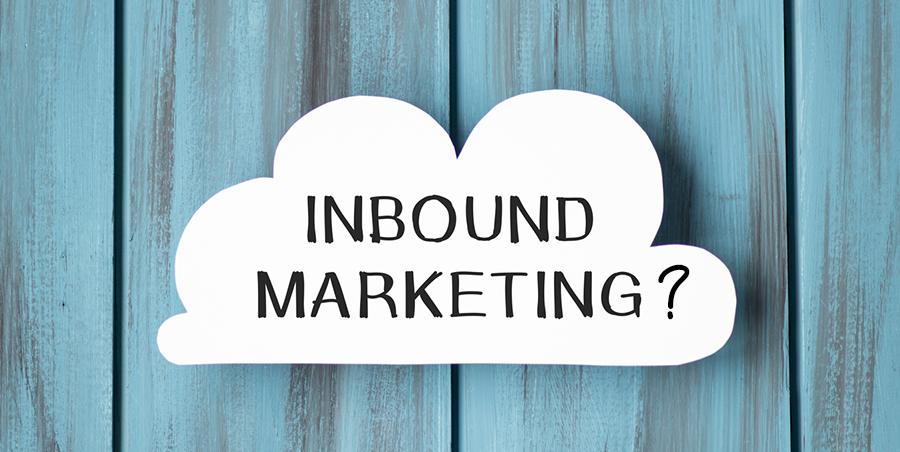
Outbound marketing goes in front of your audience, it’s interruptive and pushes itself out to the audience. And it does it without your audience wants it or not. Common examples of outbound marketing include telemarketing, billboards, TV and radio ads, pop-up ads, cold calling, and cold emailing.
On the other hand, inbound marketing is when the audience or your customers opt-in to receive marketing messages, on their own terms. For instance, if a customer subscribes to your newsletter, he or she may receive ads to their inbox. This guide looks at both inbound and outbound marketing and how can it grow your business. Let’s start:
With inbound marketing, you encourage your potential customers to make the first move. This is the ideal marketing strategy for companies that already have an existing customer base and want to keep in touch with them. It’s great for companies who want to know what their customers want.
Inbound marketing doesn’t include annoying cold calls or sales-y emails. Instead, customers get helpful, generous content free of charge, on their terms. This content often includes various blogs, press releases, infographics, videos, quizzes, and white papers.
Inbound marketing lets you:
Personalized emails are great if you want to keep in touch with your customers. However, creating personalized emails for each customer takes a lot of time. Automated platforms can help you avoid this problem – you can set up automatic emails based on the actions of a single lead. For instance, if your customer has downloaded a manual or e-book about a product, the platform will immediately detect this action and send emails specifically to that customer, to further that knowledge. Similarly, you can create automatic emails for customers who made a previous purchase, prompting them to return and buy more products.
Turning leads into actual buying customers is tough, but automated marketing can help you. An automated platform can help you continuously nurture those leads, while your marketing team can focus on other prospects.
Outbound marketing is completely different. The focus of outbound marketing is the products or services you want to sell. The message of an outbound marketing campaign is about the “what”, not the “who” or “why”. Outbound marketing uses multiple marketing tactics, like email marketing, direct mail, telemarketing, and marketing events – these tactics are usually considered “old school” marketing tactics by most marketers.
Many businesses get more clients with outbound marketing strategies, but it can become less effective as time goes on. If this happens, you should consider testing out inbound marketing strategies to expand your audience and get more customers.
Outbound marketing is, by definition, interruptive. It’s designed to be loud and attract new people to your business. It’s designed to make them respond to your offers immediately. However, modern consumers are too savvy for these old-school tactics. For instance, people often skip commercials, they fast-forward ads and simply ignore pop-up ads. Multiple video and audio platforms, including YouTube and Spotify let people listen to music without having to listen to annoying ads. The same goes for telemarketers, who are seeing lower returns across multiple niches.
People constantly avoid excessive advertising, and they prefer inbound marketing. Studies have shown that 90 percent of consumers prefer custom content and 78 percent believe that companies that provide custom content are professional and build good relationships with them. What’s more, 84 percent of 25 to 34-year-olds have left a website because of excessive, intrusive, or irrelevant advertising.
Both inbound and outbound marketing strategies have the same goal – generate more leads and create more sales. The good part is that marketing automation can help you detect who the audience is. You’ll be able to identify almost 98 percent of your anonymous traffic – and that’s a lot of people.
Automation will make your life easier, both for inbound and outbound marketing. You’ll drive more leads to your offers, convert them better, get more sales and maximize your marketing spend. According to a study done by VB Insight, about 80 percent of marketing automation users reported an increase in leads, and 77 percent reported an increase in conversions. Also, companies that used marketing automation have seen 53 percent higher conversion rates from initial response-to-MQL. Similarly, their revenue growth rate was 3.1 percent higher than non-users.

Let’s cut to the chase: Google is eating its own ecosystem. For those of us who’ve

Introduction to Gamification In today’s competitive marketing landscape, engaging your audience requires more than just traditional
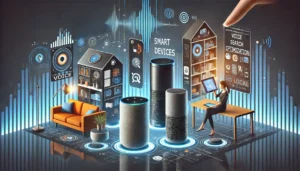
Introduction to Voice Search Optimization Voice search technology has rapidly evolved from a futuristic concept to

In recent years, the integration of artificial intelligence (AI) into Google’s search algorithms has revolutionized the

In today’s digital era, successful brands understand that engaging content goes beyond product promotion. By focusing
In today’s digital landscape, choosing the right social media platform can make or break your marketing

In the vast digital landscape of today’s internet, where billions of searches are conducted daily, merely

What Do Marketers Think? Our diverse team of marketers gathered to uncover why removing dollar signs
Are you considering hiring a social media marketing agency for your business? Here is everything a social media marketing company can offer you.

Getting new customers is very important for any business – probably the most important aspect to focus on. Similarly, retaining existing customers is vital to growing your brand. This is where email marketing becomes important – it’s the perfect strategy to implement if you want to hook your target audience and keep them coming back for more.
Let’s see which are the best emails to improve customer retention:
Whenever a new customer subscribes to your newsletter or creates an account on your website, you should send a welcome email. According to a study published by invespcro.com, welcome emails have four times higher open rates and five times as many clicks, when compared to usual emails. In other words, welcome emails give you an immense opportunity to introduce your brand to new audiences and highlight your best products.
These emails should be sent out to customers who abandon their carts while online shopping, have questions about products, or made recent purchases. This is a type of email marketing that will boost your customer retention rate but will also improve sales.
Every business looks for the perfect sale. Repeat customers, who buy multiple products and want more – these customers are ideal for any company. And promotional emails are great tools to attract these customers. You can highlight the best deals and offers, and boost your sales almost instantly. A study done by Campaign Monitor states that personalized promotional emails can boost revenue by a whopping 760 percent. What’s more, promotional emails work great with loyalty programs, where you can reward your best customers with personalized deals.
These emails are ideal for your most recent customers. You should send them 2 to 5 days after the purchase, asking them to review the products. These emails work because many customers are happy to provide you with a product review, especially if you ask for one. Pick several reviews and put them on your website or social media accounts to help improve brand awareness and trust among other customers. Negative reviews are also helpful – you can improve your products or services for future customers.
Re-engagement emails should be used as a retargeting method. For instance, you should send them out to previous customers to get them to reconnect with your brand again. A study published by Return Path has shown that 14 percent of subscribers who received re-engagement emails read them. They do work, but the strategy should be implemented long term, especially if you want to improve your relationship with the customers.
Marketing to existing customers can be challenging, but it can be very profitable. Your main focus should be on creating and maintaining the relationship, but also increase brand trust and awareness. If you know how to implement these five types of emails in your strategy, you will definitely have fewer one-time buyers in the future!

In the dynamic world of digital marketing, where attention spans are fleeting and scrolling is the

Alright, so picture this: you’re running a blog, hustling to churn out fresh content left and

Imagine your website as a bustling city, with each webpage serving as a unique neighborhood. Now,
Unveiling the Key to Sales and Marketing Triumph: The Power of Scoring In the ever-evolving landscape

In the ever-evolving landscape of digital marketing, video content has surged to the forefront, captivating audiences
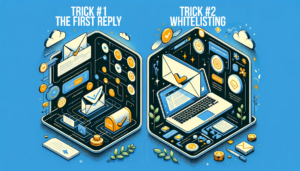
Are your carefully crafted newsletters getting lost in the abyss of the internet? Are you tired

Want to learn more about how smdigital can help?
Complete the brief form below, and one of our digital experts will reach out to you shortly.

At SMDigital, it’s all about our people, our passion, and performance for our clients! See what we can do for you!
Monday – Friday 9:00AM – 6:00PM, EST
Saturday – Sunday: Closed
Santiago Tobon
stobon@smdigitalpartners.com
US Headquarters
Congress Commerce Center
601 N. Congress Avenue
Delray Beach, FL 33445
Julián Arroyave
jarroyave@smdigital.com.co
Carrera 42 #14 – 11 Piso 5
Edificio Castropol Plaza
Medellin, Colombia S.A.
Grace Bautista
talent@smdigitalusa.com
Jose Maria del Mar St.,
cor. Abad St., Cebu IT Park,
Cebu City 6000, Philippines
Santiago Tobon
stobon@smdigitalpartners.com
US Headquarters
Congress Commerce Center
601 N. Congress Avenue
Delray Beach, FL 33445
Julián Arroyave
jarroyave@smdigital.com.co
Carrera 42 #14 – 11 Piso 5
Edificio Castropol Plaza
Medellin, Colombia S.A.
Grace Bautista
talent@smdigitalusa.com
Jose Maria del Mar St.,
cor. Abad St., Cebu IT Park,
Cebu City 6000, Philippines

At SMDigital, it’s all about our people, our passion, and performance for our clients! See what we can do for you!
Feel free to contact me, and I will be more than happy to answer all of your questions.
Schedule a 30-minute discussion with one of our digital experts. We’ll listen to your challenges and tell you if we can help.